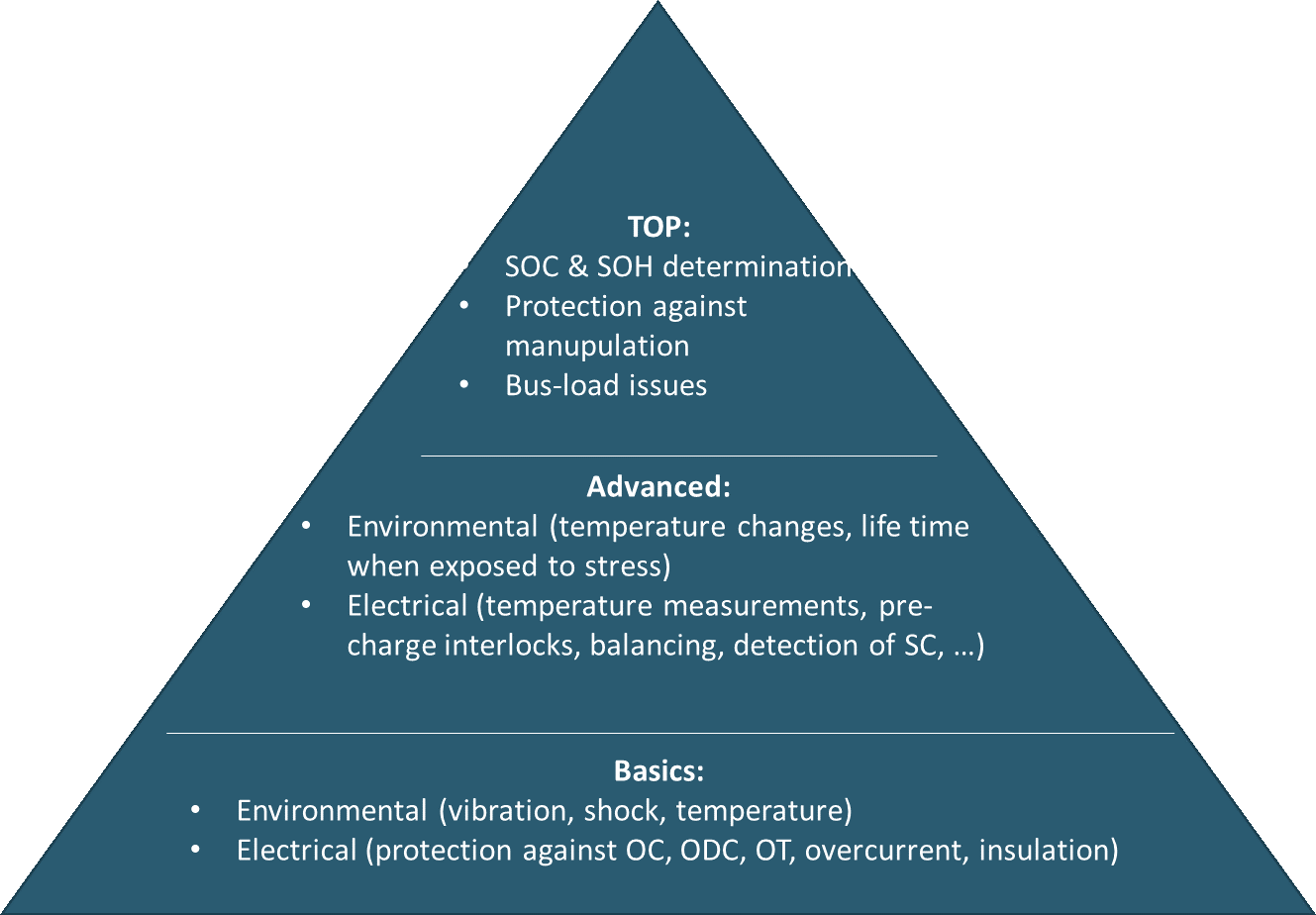Work Package 2: Increased Reliability
(Updated: March 2020)
OBJECTIVES
Improve the reliability of Li-ion batteries in electric vehicles.
PARTNERS: VITO (lead), TUV, Algolion, RWTH
APPROACH
- Develop a sensing strategy, based on standard available HW in a BMS to monitor relevant signals for the estimation of SoH of a battery during operation.
- Develop self-learning battery models that accurately monitor the battery state (SoH at module level), using advanced mathematical and statistical methods, based on the sensing strategy above.
- Develop test procedures for BMS testing and prepare them for standardization
RESULTS SO FAR
- ALGOLiON has developed innovative algorithms, based on following natural DC electrical variations in cell voltage and current during battery use, that can be used to determine a proxy internal resistance of cells and batteries. The algorithm follows patterns in the native dc current and voltage to extract information via special signal processing, and the signals are processed to determine a proxy resistance parameter which is much more sensitive and responds significantly earlier to changes in cell condition. This innovative proxy internal resistance is an important parameter for determining of the SoH of a battery.
- Further studies have been done by VITO to investigate the use of artificial neural networks (ANN) along with the existing extended Kalman filter (EKF) method for estimating the battery voltage. Application agnostic evaluation of the methods used in the previous period revealed that the initial methods were not able to correctly capture the system dynamics. Modifications were made, allowing for better preservation of temporal dependencies. A new architecture, which we refer to as a structured recurrent neural network, introduces a more intricate connection between the iterative processing done by the Kalman filter, and the training of the neural network. Preliminary tests on small datasets look promising, and will be validated on larger datasets in the following period.
- The different ageing tests designed to better understand the effect of the battery use conditions on the battery lifetime (VITO and TUV SUD) started and are still running. The tests show that the cell performance depends on the environmental temperature, the cycling C-rate and the storage SOCs. The cells cycling at 25°C and at a 1C discharge and 1C charge rate lost 15% of their initial capacity after 925 equivalent cycles. The cells cycling at 0 and 10°C reached already EOL as they lost 20% of their initial capacity.
- In order to prepare a reliability BMS test procedure, an analysis of existing standards and of existing BMS functions were carried out and reported in deliverable D2.5.

Requirements for BMS testing

shows the effect of the cell’s environmental temperature on the evolution of the 1C discharge capacity vs. total capacity throughput

shows the effect of the current C-rate on the evolution of the 1C discharge capacity vs. total capacity throughput

shows the effect of the storage SOC level on the life time.


